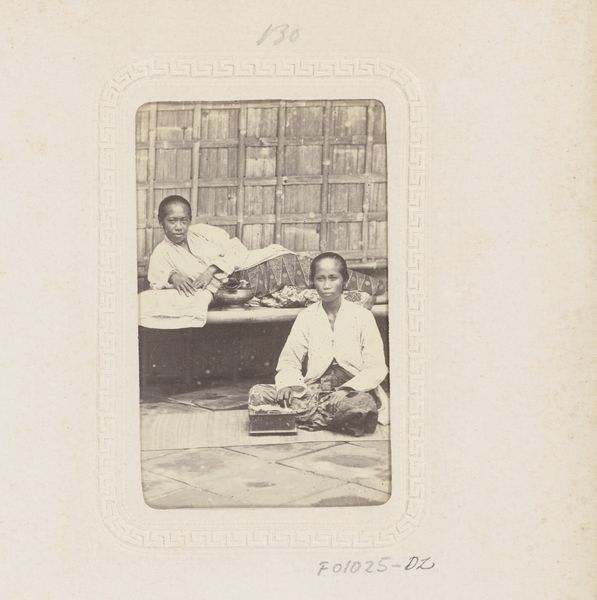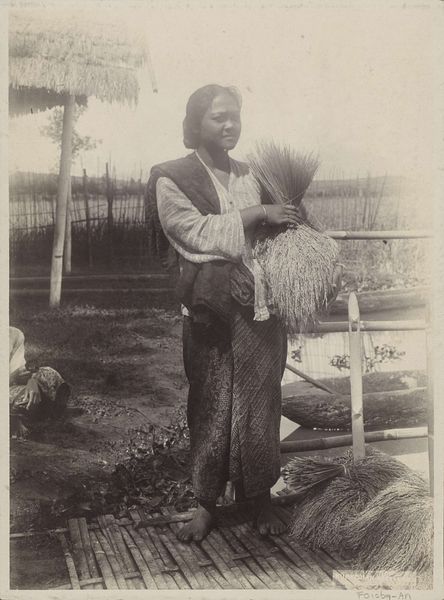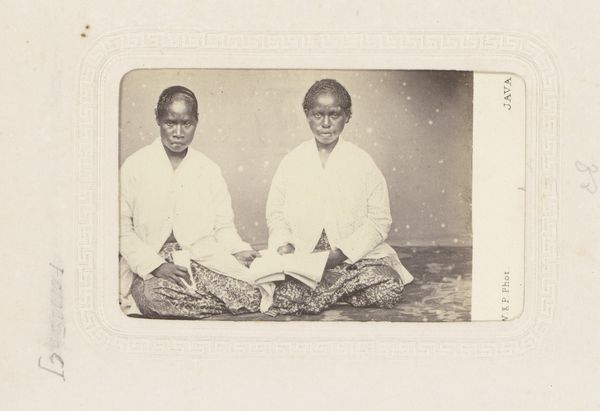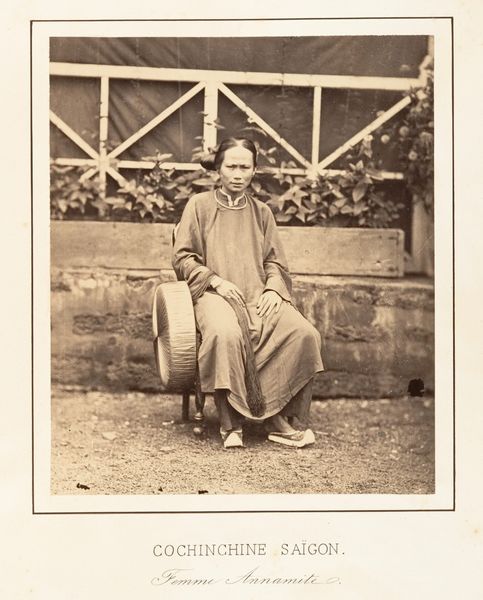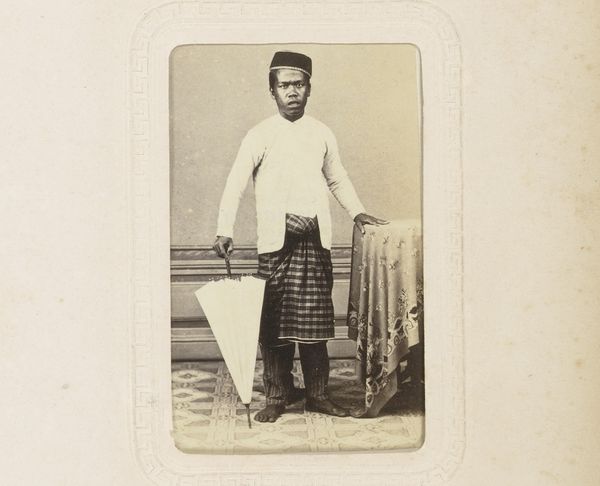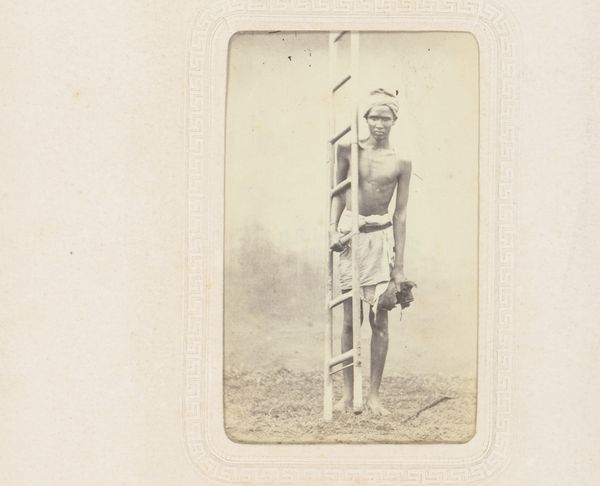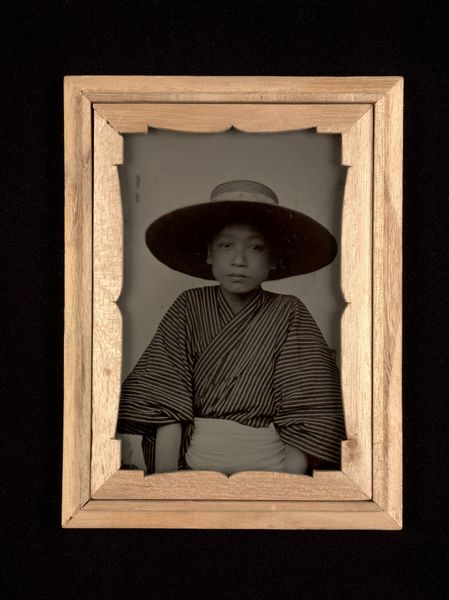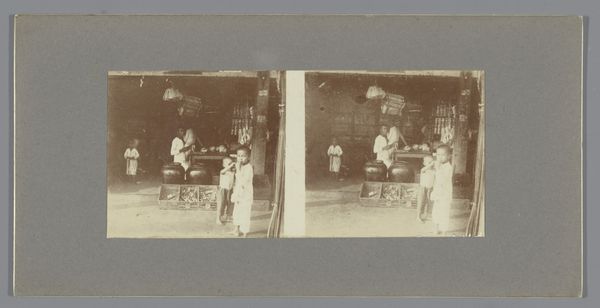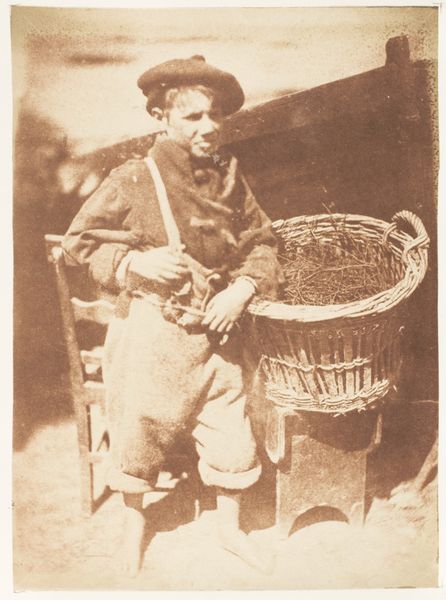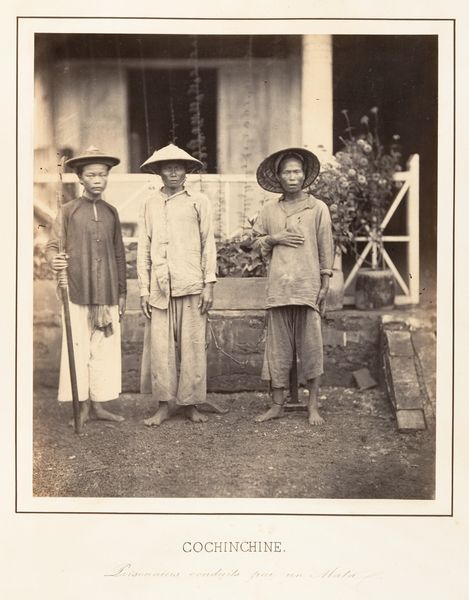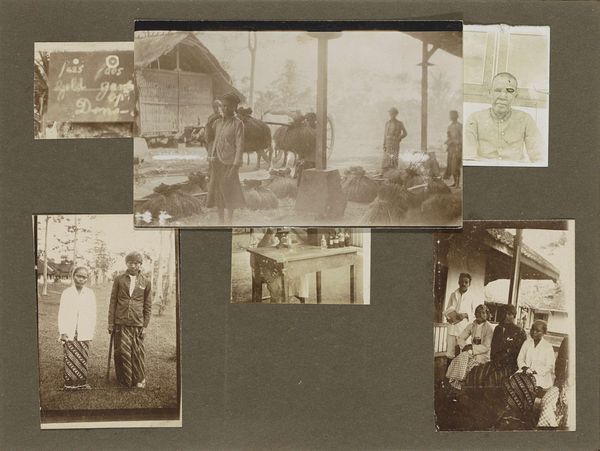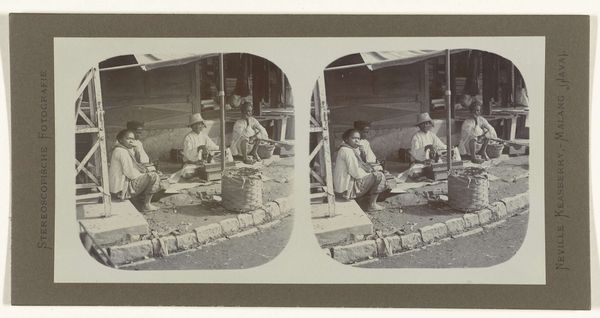
photography
#
portrait
#
archive photography
#
photography
#
historical photography
#
19th century
Dimensions: height 85 mm, height 52 mm
Copyright: Rijks Museum: Open Domain
Editor: So, this is a photograph entitled "Portret van een Indonesische slager met varkenskop," or "Portrait of an Indonesian Butcher with a Pig's Head" by Woodbury & Page, taken sometime between 1857 and 1880. The image has a stark realism that's both captivating and a bit unsettling. What symbols do you see at play here? Curator: This photograph is a potent confluence of symbols. First, consider the pig's head itself. Across cultures, the pig carries varied, sometimes contradictory, meanings. In some, it signifies prosperity and abundance; in others, impurity and gluttony. How might those readings contrast with, or even clash against, one another? Editor: Hmm, that's interesting. The butcher himself seems so stoic. Does his expression add another layer? Curator: Absolutely. His calm demeanor alongside the raw pig’s head might suggest a normalized relationship with meat, death, and the cycle of consumption. His gaze directs us. Is he challenging us or merely presenting the realities of his profession? How do you perceive his intent? Editor: I think he is offering a kind of acknowledgement. Not necessarily a challenge, but a matter-of-fact acceptance. Curator: Precisely. Now consider the colonial context of the Dutch East Indies during that time. Photographs like these were often created to document, categorize, and understand the local population. To what extent do you think this image transcends mere documentation to reveal something deeper about the man or the cultural relationship with livestock? Editor: I see your point. It prompts me to think beyond the surface and question the intentions behind the image creation, and the power dynamics involved in such visual documentation. Curator: Exactly. It's in that tension between cultural understanding and colonial gaze that the image becomes most powerful. Every object, expression, and even the act of photography itself become laden with meaning. Editor: I see the piece very differently now. Thank you! Curator: My pleasure! Exploring art is, after all, a journey of constant discovery and questioning.
Comments
No comments
Be the first to comment and join the conversation on the ultimate creative platform.
